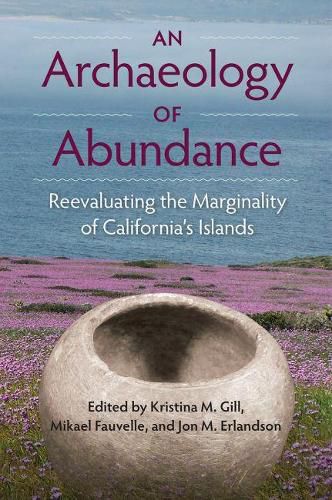Readings Newsletter
Become a Readings Member to make your shopping experience even easier.
Sign in or sign up for free!
You’re not far away from qualifying for FREE standard shipping within Australia
You’ve qualified for FREE standard shipping within Australia
The cart is loading…






This title is printed to order. This book may have been self-published. If so, we cannot guarantee the quality of the content. In the main most books will have gone through the editing process however some may not. We therefore suggest that you be aware of this before ordering this book. If in doubt check either the author or publisher’s details as we are unable to accept any returns unless they are faulty. Please contact us if you have any questions.
The Alta and Baja California islands changed dramatically in the centuries after Spanish colonists arrived. Native populations were decimated, and their lives were altered through forced assimilation and the cessation of burning and traditional foraging practices. Overgrazing, overfishing, and the introduction of nonnative species depleted natural resources severely. Modern scientists have assumed the islands were similarly sparse before European contact, but An Archaeology of Abundance reassesses this long-held belief, analyzing new lines of evidence showing that the California Islands were rich in resources important to human populations.
Contributors examine data from Paleocoastal to historic times that suggest the islands were optimal habitats that provided food, fresh water, minerals, and fuel for the people living there. Botanical remains from these sites, together with the modern resurgence of plant communities after the removal of livestock, challenge theories formed during the historical ranching era. Geoarchaeological surveys contradict claims that the islands had few high-quality materials for making stone tools. Trade exchange routes, underwater forests of edible seaweeds, and reconstructions of population densities also support the case for abundance on the islands.
Reinforcing the argument that these islands were not marginal environments in the early human history of the region, the discoveries presented in this volume hold significant implications for reassessing the ancient history of islands around the world that have undergone similar ecological transformations.
A volume in the series Society and Ecology in Island and Coastal Archaeology, edited by Victor D. Thompson.
$9.00 standard shipping within Australia
FREE standard shipping within Australia for orders over $100.00
Express & International shipping calculated at checkout
This title is printed to order. This book may have been self-published. If so, we cannot guarantee the quality of the content. In the main most books will have gone through the editing process however some may not. We therefore suggest that you be aware of this before ordering this book. If in doubt check either the author or publisher’s details as we are unable to accept any returns unless they are faulty. Please contact us if you have any questions.
The Alta and Baja California islands changed dramatically in the centuries after Spanish colonists arrived. Native populations were decimated, and their lives were altered through forced assimilation and the cessation of burning and traditional foraging practices. Overgrazing, overfishing, and the introduction of nonnative species depleted natural resources severely. Modern scientists have assumed the islands were similarly sparse before European contact, but An Archaeology of Abundance reassesses this long-held belief, analyzing new lines of evidence showing that the California Islands were rich in resources important to human populations.
Contributors examine data from Paleocoastal to historic times that suggest the islands were optimal habitats that provided food, fresh water, minerals, and fuel for the people living there. Botanical remains from these sites, together with the modern resurgence of plant communities after the removal of livestock, challenge theories formed during the historical ranching era. Geoarchaeological surveys contradict claims that the islands had few high-quality materials for making stone tools. Trade exchange routes, underwater forests of edible seaweeds, and reconstructions of population densities also support the case for abundance on the islands.
Reinforcing the argument that these islands were not marginal environments in the early human history of the region, the discoveries presented in this volume hold significant implications for reassessing the ancient history of islands around the world that have undergone similar ecological transformations.
A volume in the series Society and Ecology in Island and Coastal Archaeology, edited by Victor D. Thompson.